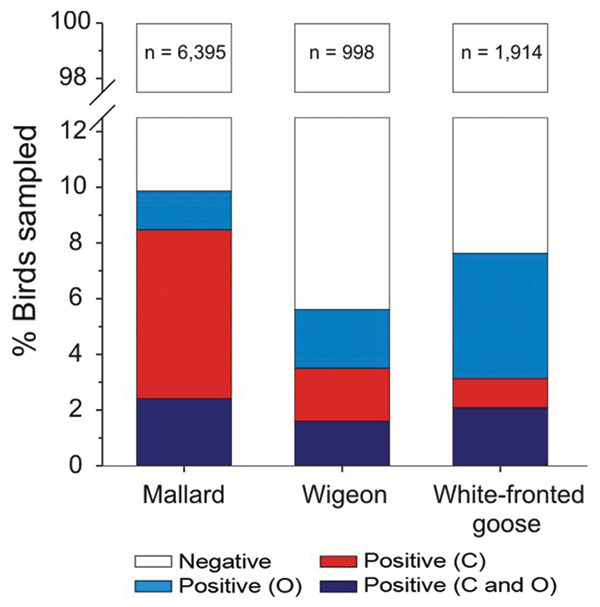Volume 16, Number 12—December 2010
Perspective
Surveillance of Wild Birds for Avian Influenza Virus
Figure 2

Figure 2. Proportion of wild mallards (Anas platyrhynchos), Eurasian wigeons (Anas penelope), and white-fronted geese (Anser albifrons) positive for low-pathogenicity avian influenza virus when sampled in the cloaca (C) and the oropharynx (O), the Netherlands, September 2006–March 2009.
Page created: August 28, 2011
Page updated: August 28, 2011
Page reviewed: August 28, 2011
The conclusions, findings, and opinions expressed by authors contributing to this journal do not necessarily reflect the official position of the U.S. Department of Health and Human Services, the Public Health Service, the Centers for Disease Control and Prevention, or the authors' affiliated institutions. Use of trade names is for identification only and does not imply endorsement by any of the groups named above.